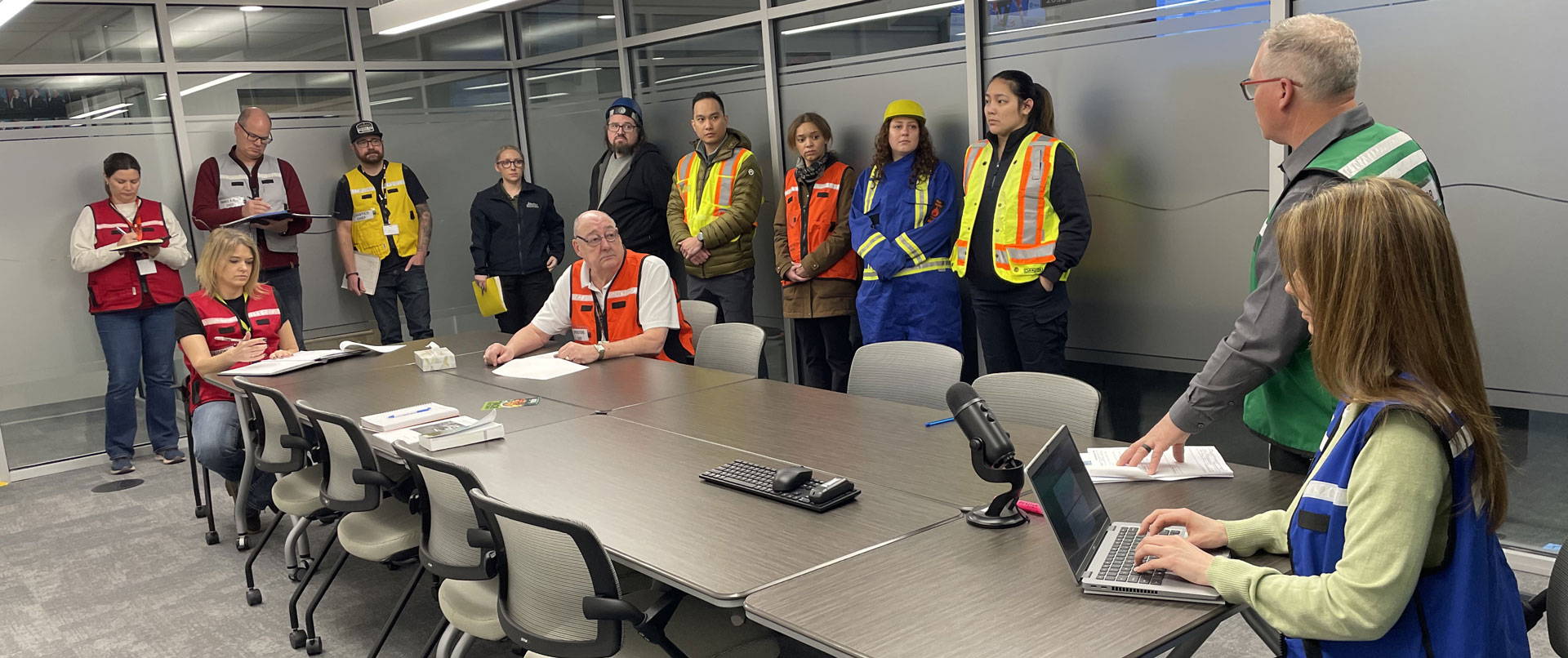Preparing for emergencies
April 05, 2024
Over the past three days, The City of Red Deer has played host to a high-intensity emergency exercise to help 45 central Alberta municipalities prepare for and respond to real-world emergencies.

Representatives from Red Deer County, Stettler County, Lacombe County, Kneehill County, Town of Sylvan Lake, Town of Blackfalds, and City of Red Deer participated in the exercise which was facilitated by Alberta Emergency Management Agency (AEMA) and Central Region All Hazards Incident Management Team (CRAHIMT).
During emergencies, municipalities follow the Incident Command System (ICS), which have very prescribed roles emergency responder must fill, including an incident commander, sections for operations, planning, logistics, and finance, as well as a public information officer, safety officer and a liaison officer. Participants were given a role in this Incident Command System and challenged with responding to the simulated emergency scenario: severe flooding in Lacombe.
Through escalating challenges crafted by AEMA, responders grappled with real-world roadblocks —missing animals, rising floodwaters, business disruptions, and encroaching fires. Participants confronted these hurdles head-on, gaining invaluable hands-on experience in problem-solving.
“The AEMA team would choose issues that reflect actual events which have happened in past emergencies. This helps us experience the challenges of facing mounting, complex obstacles,” said Carol Lind, Emergency Management Coordinator for The City of Red Deer.
Simulating the basic Incident Command System, the Incident Commander would meet with command and general staff to discuss objectives, work assignments, resourcing needs, and reporting progress. CRAHIMT, which is a multidisciplinary team of individuals from different municipalities and private industry with additional experience and training, provided advice, expertise and guidance as the participants worked to respond to the issues.
“Our goal is to build capacity within municipalities and regions. Because hands-on, simulated training scenarios are so valuable to those tasked with emergency response, we try to do an exercise of this scale once a year,” said Drayton Bussiere with CRAHIMT. “Since organizing in 2017, we have seen a significant increase in the readiness and operability within the central region.”
One of the benefits for The City of Red Deer as the host for this exercise was that it provided an opportunity to test Red Deer’s primary Emergency Coordination Centre (ECC) as well as enhance staff knowledge, as the training session allowed for municipal staff participation.
“The outcome of this high-intensity drill is that by being united in purpose and practice, our municipalities stand ready to face whatever emergencies may come their way, ensuring the safety and security of our communities,” said Lind.